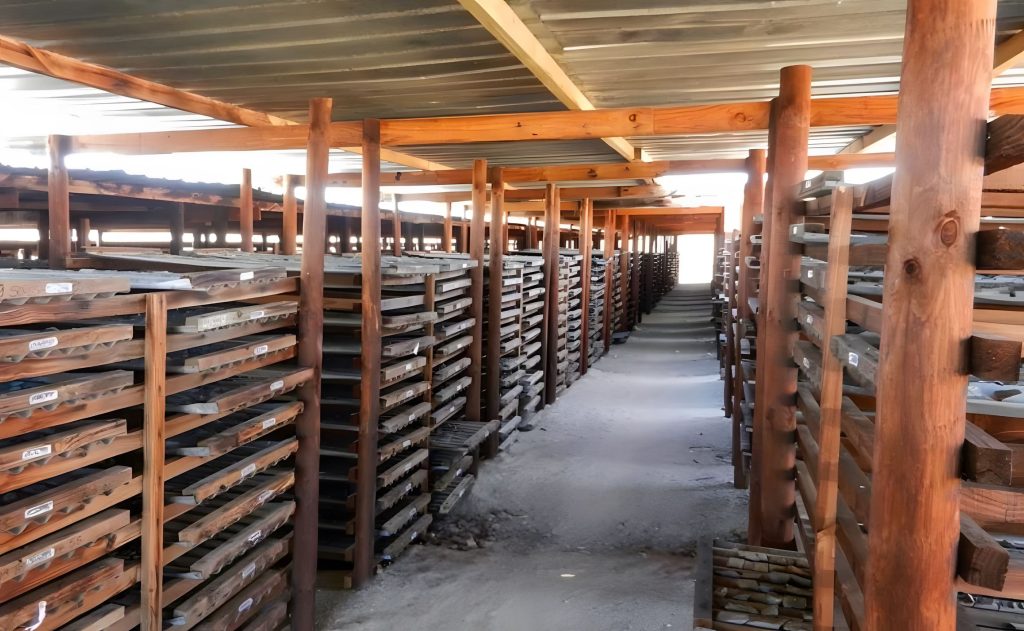Koryx Copper intersects 72 metres of 0.38% CuEq; 80 metres of 0.34% CuEq at Haib Copper Project, Namibia

Koryx Copper Inc. [TSXV-KRY] reported the sixth and final batch of assay results from the H1-2024 drill program at its Haib Copper project in southern Namibia.
The seven holes for which assay results are reported here, cover 1,430 metres and 716 sample assays. One of the holes reported was drilled on Target1, two were drilled from Target1 towards Target2 and the remaining four were drilled in the Target2 area. The primary purpose of this drill program was to close the sample spacing in Target1, define the mineralization between Target1 and Target2 and to delineate the grade limit above 0.3% Cu in the Target2 area.
Significant copper intersections include: HM25: 44m of 0.32% CuEq (from surface) including 8m of 0.51% CuEq. HM40: 28m of 0.31% (from surface) and 10m of 0.80% CuEq from 104m. HM41: 24m of 0.34% CuEq including 6m of 0.53%. HM44: 76m of 0.33% CuEq and 48m from surface of 0.31% CuEq. HM45: 72m of 0.38% CuEq including 10m of 0.68% CuEq. HM46: 80m of 0.34% CuEq (from of 0.39% CuEq (from near surface) and 40m of 0.39% CuEq.
Pierre Léveillé, President and CEO, stated that: “The final results from our 2024 drill program demonstrate that the deposit can deliver grades over 0.3% Cu for substantial widths within the project area. They also indicate the potential to significantly improve the average grade of the deposit compared to previous mineral resource estimates. These results are also important in that they also indicate above average grades in the outer limits of the deposit. This bodes well for the imminent, updated NI 43-101 Mineral Resource Estimate and follow up drill program due to start in August 2024.”
All of the reported drillholes were completed in the vicinity of the Target1 and Target2 potential starter mining areas which have historically shown better grade.
Drill holes HM25, HM40 and HM41 in the Target1 area demonstrate near surface mineralization at good grades, while HM25 also extends known mineralization approximately 50m to the east of the limit defined by historical drilling (Rio Tinto drillhole HB082). This encouraging mineralization close to surface supports the Target1 area as a good target for early mining.
It was reported in the previous press release that assay results for 8 drillholes were still outstanding, however only 7 drillholes had outstanding assays, all of which are now reported above. The 2024 drilling campaign was completed comprising 26 drillholes (including 1 redrill and deepening of the 2021 drillhole, HM23) totaling 2,861m of drilling. Altogether, 2,426 samples were assayed.
A new drill program is being planned with the aim of identifying all remaining mineralized zones and their controls within the main Haib area while also reducing the drill spacing to convert resources to Indicated level in the Target1, Target2 and Target3 area. Drill planning is far advanced, and the fieldwork program is expected to start in August 2024.
The Haib project team is in the process of critically reviewing the historical technical studies with the aim of assessing the potential viability of a conventional milling & flotation circuit to compare with the currently envisaged flotation of fine material and bacterial leaching of the coarse material.
In preparation for this, a follow-on metallurgical test work program has been designed which will include crushing, milling and flotation testwork for higher-grade material as well as coarse particle flotation and bacterial heap leaching of lower grade samples.
Environmental and social impact assessments have begun and certain of the baseline studies are underway with preliminary investigations of the project sites. The ongoing specialist baseline studies will function as a screening study to identify aspects of the project that will be targeted during the detailed ESIA as the project details become more defined.
The lead time for the metallurgical test work is expected to be approximately six months and the results will provide the basis for follow-on economic assessments and feasibility studies. It is intended to use the results of all of these programs to update the PEA design with options that improve the process route.
The company granted a total of 250,000 incentive stock options to purchase common shares of the company to certain Directors, Officers, Consultants and Employees of the company pursuant to the Company’s long-term incentive plan (the LTIP). Each Option is exercisable into one Common Share at an exercise price of $0.70 per Common Share for three years. One half of the Options shall vest after 12 months of the grant date and 1/4 every 6 months thereafter. All Options expire August 8, 2027.
Additionally, the company has issued 2,395,000 restricted share units (the RSUs) to certain Directors and Officers, Consultants and Employees of the company in accordance with the LTIP. Each RSU entitles the holder to acquire one Common Share on vesting. One half of the RSUs shall vest after 12 months of the grant date and 1/4 every 6 months thereafter.
The company also extended 100,000 options issued to a consultant in 2021. The options will now expire on June 2, 2025 at an exercise price of $1.00 per Common Share.
Koryx Copper is focused on advancing the 100%-owned, PEA-stage Haib Copper Project in Namibia whilst also building a portfolio of copper exploration licenses in Zambia.
Haib is a large and advanced copper/molybdenum porphyry deposit in southern Namibia with a history of exploration and project development by multiple operators. Mineralization at Haib is typical of a porphyry copper deposit and the deposit remains intact.
More than 70,000 metres of drilling has been conducted at Haib since the 1970’s with significant exploration programs led by companies including Falconbridge (1964), Rio Tinto (1975) and Teck (2014).
